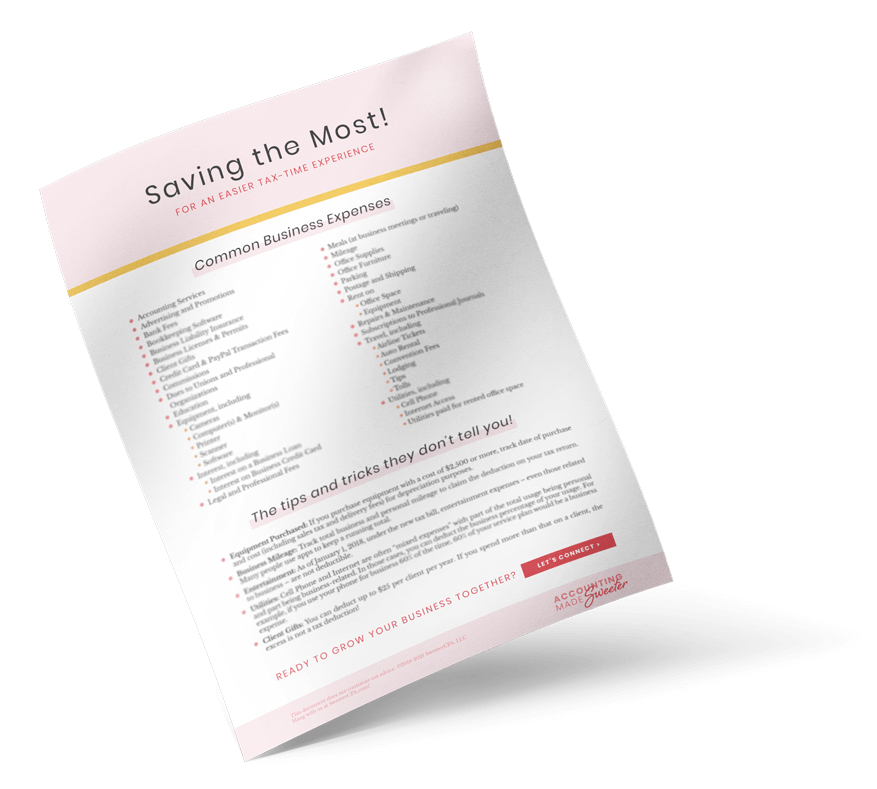Occasionally, I write about tax topics for other business sites. Below is a preview of an article I wrote for Create Hype.
Estimated taxes for the third quarter of 2012 (June 1 to August 31) are due on September 17, so now is the time to gather your income and expense documents and start calculating!
What are Estimated Taxes?
Estimated tax payments are used to pay taxes on income not subject to withholding. Anyone who has been an employee of someone else has seen the amounts taken out of his or her paycheck for tax purposes. Part of this is your income tax withholding. The IRS requires employers to retain, or withhold, amounts from paychecks to cover the employee’s income tax liability.
This situation is slightly different for people who are self-employed. As there is no employer to withhold income from paychecks, self-employed individuals are required to submit their own withholdings quarterly.
In most cases, you need to pay estimated taxes if:
- You expect to owe at least $1,000 in taxes for the year after subtracting withholdings (if any) and refundable credits. (Note: refundable credits are those that provide you a refund if your tax liability is zero or less. Some examples are the Earned Income Credit and the Child Tax Credit).
- You expect your withholding and refundable credits to be less than the smaller of:
- 90% of your total expected tax for 2012, or
- of the tax on your prior year return.
In short, you want your withholdings and refundable credits to cover at least 90% of what you owe this year or 100% of what you owed last year. If they don’t, and the difference is $1,000 or greater, you need to pay estimated taxes.
You do not owe Estimated Taxes if you meet all three of the following requirements:
- You did not have a tax liability in the prior year (i.e., last year you owed $0 in taxes).
- You are a US citizen or resident for the whole year.
- Your prior tax year covered a 12-month period.
How do you calculate Estimated Taxes?
The easiest way is to begin with you prior year return and adjust for changes in the tax law and/or your personal situation.
The IRS allows for two methods to calculate the amount you owe.
- Regular Installment Method. This method assumes that all of your income for the year comes to you evenly and regularly throughout the year. In simple terms, you calculate how much you will earn for the year and the taxes you will owe on that amount. Then, you divide your tax liability by four and pay one-fourth each quarter.
- Annualized Installment Method. This method assumes your income is not regular over the course of the year. Perhaps the product or service you sell is seasonal and you get most of your income around the Winter holidays. This payment calculation method allows for swells and inconsistencies in income and throughout the year.
How do you pay Estimated Taxes?
Individuals should calculate their federal estimated tax liability using the Form 1040-ES.
While estimated taxes can be paid by mailing in a check or money order with the proper payment voucher for that quarter, the best method is to pay online. The IRS strongly encourages online payment. By paying online, you are able to ensure timely receipt of your payment and can pay with credit or debit card.
State Estimated Taxes
If your state collects an income tax, it likely also collects estimated taxes. Visit your state’s department of revenue website for more information.
Penalties
Individuals who don’t pay or underpay their estimated taxes generally face a penalty unless the total amount of withholding and estimated tax payments is equal to:
- 100% of your prior year tax liability, or
- 90% of your current year tax liability
Penalties are figured separately for each period, so you may owe for an underpayment in a prior period even if you paid enough later to “catch up” on the amount due. It’s very important to calculate the proper amount due each period and pay it on time!
Read the full article here.



